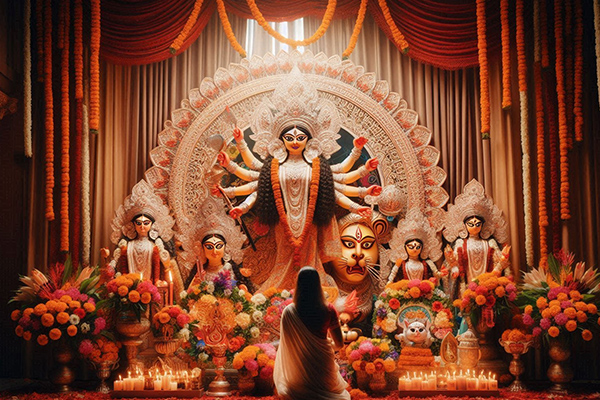
Navratri, also called Sharad Navratri or Shardiya Navratri, is a sacred Hindu festival devoted to Maa Durga, the divine embodiment of Shakti. The word means nine nights, during which devotees worship the Navadurga, the nine forms of the goddess, each symbolizing unique virtues like strength, wisdom, compassion, and protection.
This festival overlaps with Durga Puja in many regions, where the triumph of the goddess over Mahishasura is celebrated with grandeur. Beyond rituals and fasting, Navratri inspires inner transformation and reminds us of the eternal truth that good always prevails over evil.
For readers, exploring the depth of Navratri and Durga Puja opens the door to understanding the power of the divine feminine that sustains the universe. It reveals how invoking Navadurga during these nine nights nurtures courage, harmony, and spiritual growth, while blessing life with peace, prosperity, and renewed energy.
What is Navratri Festival?
.jpg)
“Nav” means 9 and “Ratri” means nights, thus Sharad Navratri or Shardiya Navratri is a vibrant Hindu festival of nine nights dedicated to the Divine Feminine Shakti. Across these days, different forms of Durga Devi are worshipped through rituals that honor her power to destroy evil and ignorance. This sacred festival celebrates her role in restoring peace, harmony, and balance to the universe.
The Meaning of Navratri
Navratri is a Hindu festival that means nine nights, derived from the Sanskrit words “Nav” for nine and “Ratri” for nights. It is dedicated to worshipping Maa Durga and her nine divine forms known as Navadurga. Each day of the festival honors one form of the goddess, symbolizing different virtues like strength, wisdom, courage, and compassion.
The festival is observed with rituals such as Ghatasthapana, fasting, prayers, and cultural events. In many regions, it overlaps with Durga Puja, celebrating Maa Durga’s victory over Mahishasura, which represents the triumph of good over evil. Navratri is not only a time of devotion but also of self-discipline, spiritual growth, and community celebrations through dance, music, and sacred rituals.
At its core, Navratri signifies the worship of divine feminine energy or Shakti, reminding devotees of the cosmic power that creates, preserves, and protects the universe. It serves as both a spiritual practice and a cultural celebration, offering renewal, harmony, and inspiration to all who observe it.
Shardiya Navratri story and significance
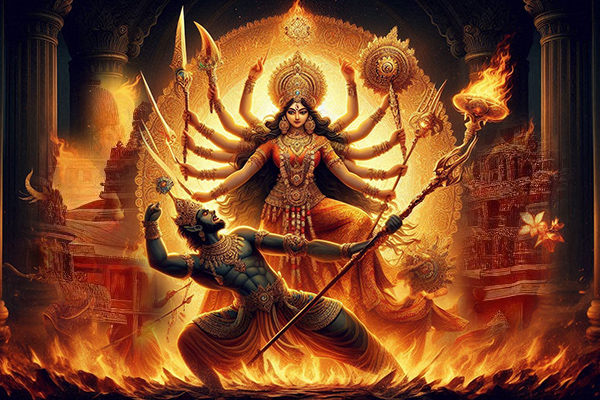
Navratri celebrates the victories of Maa Durga over demons that symbolize inner vices and obstacles on the spiritual path. Madhu and Kaitabha, representing attachment to pleasure and pain, were the first to be destroyed, teaching the need to rise above both extremes. Chanda and Munda embodied indulgence and renunciation, and their defeat revealed the importance of balance, living in the world without being consumed by it.
Raktabeej, whose blood produced countless clones, symbolized multiplying desires and restless thoughts. Maa Kali ended his chaos by drinking his blood, showing that transformation, not suppression, leads to liberation. Shumbh and Nishumbh stood for ego and possessiveness, and their downfall marked the dissolution of attachment and false identity.
Finally, Mahishasura, the buffalo demon embodying arrogance and pride in the physical body, was slain after nine nights of battle. On the tenth day, Vijayadashami, Maa Durga’s triumph as Mahishasura Mardini is celebrated, completing the essence of Navratri as the victory of truth and purity over ignorance and ego.
Spiritual Significance
The battles of Maa Durga symbolize the inner journey of transformation that every seeker must undergo. Madhu and Kaitabha represent pleasure and pain, teaching that both must be transcended. Chanda and Munda emphasize balance, guiding us to live in the world while remaining spiritually detached.
Raktabeej shows how desires multiply when suppressed, pointing to the necessity of divine purification. Shumbh and Nishumbh reflect the grip of ego and attachment, reminding us that liberation requires transcending both. Mahishasura, embodying arrogance and ignorance, is the final obstacle whose defeat clears the way for awakening.
These stories reveal why Maa Durga is worshipped as Adi Shakti, Jagadamba, and Mahakali, the supreme force of creation, preservation, and destruction. Her lion embodies courage, and her trident symbolizes mastery over the three gunas. Navratri is thus a sacred reminder that honoring Maa Durga awakens courage, clarity, and divine strength to conquer inner darkness and restore harmony.
Importance of Navratri
Navratri holds profound spiritual, cultural, and social importance as it honors the divine feminine energy embodied in Maa Durga. Across nine sacred nights, devotees worship the Navadurga, each form representing distinct qualities such as strength, wisdom, compassion, and protection. This worship reminds humanity of the eternal truth that good always triumphs over evil, symbolized through Maa Durga’s victory over Mahishasura.
The festival begins with Ghatasthapana, the ritual of invoking the goddess into a sacred kalash, marking the start of nine days of devotion. Each day deepens the spiritual journey, with practices like fasting, chanting, and collective prayers that purify the body and mind. Kanya Pujan performed towards the end of Navratri venerates young girls as living embodiments of Maa Durga, reinforcing reverence for innocence and divinity in human form.
Navratri also coincides with Durga Puja in many regions, where grand festivities highlight the divine power of Maa Durga. The culmination of Navratri is Vijayadashami, celebrated as the day of victory, signifying the destruction of evil and restoration of dharma. Beyond its spiritual depth, Navratri fosters cultural vibrancy through dance, music, and rituals, while uniting communities in devotion. It offers a time of reflection, renewal, and celebration of the divine feminine force that sustains the universe.
Sharad Navratri 2026 Dates and Timings
Date & Day
Puja
11th October 2026, Sunday
Ghatasthapana Kalash, Shailputri Puja
12th October 2026, Monday
Chandra Darshana, Brahmacharini Puja
13th October 2026, Tuesday
Sindoor Tritiya, Chandraghanta Puja
14th October 2026, Wednesday
Vinayaka Chaturthi, Kushmanda Puja
15th October 2026, Thursday
Upang Lalita Vrat, Skandamata Puja
16th October 2026, Friday
Saraswati Avahan, Katyayani Puja
17th October 2026, Saturday
Saraswati Puja, Kalaratri Puja
18th October 2026, Sunday
Durga Ashtami, Mahagauri Puja, Sandhi Puja
19th October 2026, Monday
Maha Navami, Ayudha Puja, Navami Homa
20th October 2026, Tuesday
Navratri Parana, Durga Visarjan, Vijayadashami
Sharad Navratri in 2026 will begin with Ghatasthapana on Sunday, October 11.
The most favorable time for Ghatasthapana is from 6:19 AM to 10:12 AM, lasting 3 hours 52 minutes.
The Abhijit Muhurat for Ghatasthapana is from 11:44 AM to 12:31 PM.
Pratipada Tithi starts at 9:19 PM on October 10 and ends at 9:30 PM on October 11.
This auspicious period also aligns with Kanya Lagna in the morning of October 11.
Types of Navratri
Magha Navratri
Magha Navratri, observed in the month of Magha (January–February), is one of the Gupt Navratris known for its esoteric and mystical significance. It is dedicated to deep spiritual practices focused on worshipping the Divine Feminine energy. Devotees engage in fasting, meditation, and sadhanas during this time, which are believed to yield powerful spiritual and material benefits. This Navratri enhances the potency of ancient practices, offering protection, growth, and divine blessings. It provides a rare opportunity to strengthen the bond with the Divine Mother and immerse in her transformative energy.
Magha Gupt Navratri in 2026 will be celebrated from Monday, January 19.
Chaitra Navratri
Chaitra Navratri, celebrated in March or April, marks the beginning of the Hindu lunar year. This spring festival is a time of inner renewal, self-discipline, and devotion to Maa Durga and her many forms. Devotees observe fasting, chant scriptures, and perform sacred rituals seeking blessings for health, prosperity, and protection. The ninth day is celebrated as Ram Navami, honoring the birth of Shri Ram and his ideals of righteousness and compassion. Chaitra Navratri is especially significant in Northern India, where it inspires spiritual introspection and renewed commitment to virtuous living.
Chaitra Navratri in 2026 will begin on Thursday, 19th March.
Ashada Navratri
Ashada Navratri, also called Gayatri Navratri, is another Gupt Navratri observed in June or July during Ashad Shukla Paksha. Like Magha Navratri, it holds special importance for Tantriks and Sadhaks. Devotees worship the Varahi form of Devi and engage in powerful sadhanas, including Navadurga practices. The period is considered highly auspicious for spiritual transformation, purification, and rejuvenation of the mind, body, and soul. Ashada Navratri is a sacred time for seekers to intensify their spiritual journey and strengthen their connection with Maa Durga’s energy.
Ashadha Gupt Navratri in 2026 will begin on Wednesday, 15th July.
Sharad Navratri
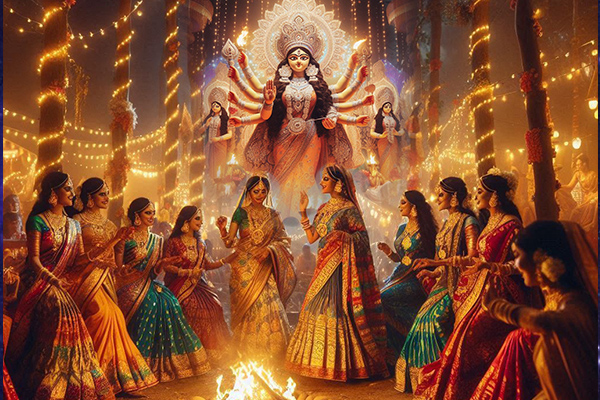
Sharad Navratri, also known as Maha Navratri, is the most widely celebrated of the four. It falls in Ashwin (September–October) and commemorates Maa Durga’s battle with Mahishasura, culminating in her victory on Vijayadashami or Dussehra. This Navratri symbolizes courage, power, and the triumph of good over evil. The festival is marked by grandeur, particularly in states like Gujarat, Maharashtra, and Rajasthan, where Garba and Dandiya Raas dances fill community spaces with music, color, and devotion. Sharad Navratri culminates with effigies of Ravana being burned, symbolizing the destruction of evil and echoing Shri Ram’s victory in the Ramayana. It is both a spiritual and cultural celebration, blending devotion with joy, and fostering unity while honoring the divine power of Maa Durga.
Sharada Navratri 2026 will be celebrated from Sunday, 11th October 2026.
Navratri Mahapuja
The Navratri Mahapuja is a comprehensive 10-day Vedic ritual honoring Maa Durga in her nine divine forms, performed from September 22 to October 2. It includes Kalash Sthapana, various pujas, Navchandi path, mantra chanting, homas, and aarti, culminating in the Dussehra celebration. Conducted by expert priests, this puja seeks blessings for power, health, wealth, and success. Live streaming and personalized puja based on birth details are available.
Navratri Durga Puja Vidhi
Navratri puja follows the Shodashopachara or sixteen-step procedure of worship. It begins with Dhyana and Avahana, invoking Maa Durga through meditation and mantras. Asana, Padya Prakshalana, and Arghya follow, symbolizing respect and hospitality.
The goddess is then offered Achamana, Snana, Vastra, and Abhushana. Chandan, Roli, Kajal, and sacred items like Akshata and Saubhagya Sutra are placed before her. Pushpanjali, Bilvapatra, incense, Naivedya, fruits, and coconut complete the offerings.
The puja ends with Nirajan, Pradakshina, and Kshamapan, asking forgiveness for mistakes. Reciting Durga Saptashati during Day-wise Navratri puja vidhi brings blessings and divine protection.
How to perform Ghatasthapana at home
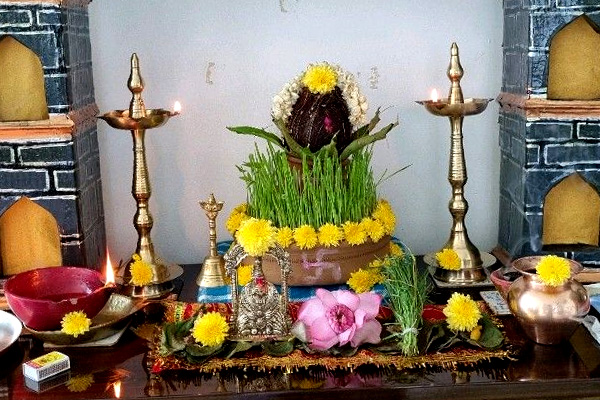
Ghatasthapana marks the start of Navratri and invokes Goddess Shakti into the kalash. How to perform Ghatasthapana at home includes placing the kalash with water, mango leaves, and coconut during the first one-third of the day on Pratipada. Scriptures advise avoiding Amavasya and nighttime for this ritual.
If the morning muhurta is missed, Abhijit Muhurta can be chosen. The kalash is worshipped for nine days as the divine seat of Maa Durga’s energy.
Kanya Pujan procedure step by step

Kanya Pujan is performed on Ashtami or Navami. Eight girls and one boy symbolizing Batuk Bhairav are honored as living forms of Shakti. Their feet are washed, tilak is applied, and they are offered Prasad of halwa, puri, and chana.
The Kanya Puja is a sacred ritual worshipping nine young girls as divine manifestations of Maa Durga, performed during Navratri to seek blessings for purity, prosperity, and protection. The puja involves washing the feet of the girls, offering food, gifts, and prayers, symbolizing reverence for feminine energy and spiritual grace. It is conducted by experienced priests and can be personalized with live streaming and coordination.
Gifts such as clothes, bangles, and notebooks are presented to them. Devotees perform aarti and touch their feet to seek blessings before breaking their fasts.
Navratri Fasting Rules and Food List
.jpg)
Navratri fasting rules and food list vary, but the essence is maintaining purity and devotion. Many fast for nine days, while some observe only the first or last two days. Devotees follow a diet mainly of fruits, milk, or consume a single light sattvic meal each day.
Allowed flours include kuttu, singhara, and rajgira, while rice can be replaced with samvat ke chawal. Vegetables like potatoes, sweet potato, bottle gourd, and spinach are commonly eaten. Rock salt or sendha namak is used instead of table salt.
Milk, curd, paneer, and ghee are permitted, along with sabudana preparations like khichdi or vadas. Foods to avoid include onion, garlic, legumes, wheat, non-vegetarian items, alcohol, and processed or fast food.
Navratri Do’s & Don’ts
- Begin with Ghatasthapana at the right time. Perform the ritual during the first one-third of the day on Pratipada. Avoid conducting it during Amavasya or nighttime to ensure auspiciousness and invite the blessings of the Goddess.
- Maintain ritual purity and cleanliness. Wake up early, bathe before puja, and keep the space clean. Cleanliness fosters reverence and creates an atmosphere pleasing to the divine.
- Follow mindful fasting practices. Favor sattvic foods such as fruits, milk, and nuts while avoiding onion, garlic, non-vegetarian food, alcohol, and heavy spices. This keeps both body and mind aligned with spiritual focus.
- Treat Kanya Pujan with devotion. On the 8th or 9th day, honor young girls as living forms of Maa Durga. Wash their feet, offer food and gifts, and recognize the sacred feminine energy.
- Celebrate Shardiya Navratri. Join Garba and Dandiya festivities with joy but remain rooted in devotion. Ensure cultural expressions complement rather than distract from spiritual practices.
- End with grace on Vijayadashami. Carry forward the virtues cultivated during the nine nights. Let the triumph of Maa Durga inspire righteous living, inner strength, and harmony in daily life.
Navratri Puja Mantra Japa
Chanting mantras during Navratri invokes the blessings of Maa Durga directly. The Durga Beej Mantra 'Om Dum Durgaye Namah' and Navaran Mantra 'Om Aim Hreem Kleem Chamundaye Viche' are particularly powerful for strengthening focus, removing negativity, and building courage.
Below are the Navdurga mantras for each of the nine forms worshipped during Navratri:
- Shailputri: Om Shaam Sheem Shoom Shailputryai Namah ||
- Brahmacharini: Om Braam Breem Broom Brahmcharinyai Namah ||
- Chandraghanta: Om Hreem Kleem Shreem Chandraghantayai Namah ||
- Kushmanda: Om Hreem Kushmandayai Jagatprasootyai Namah ||
- Skandamata: Om Hreem Saha Skandmatryai Namah ||
- Katyayani: Om Hreem Shreem Katyayanyai Namah ||
- Kalaratri: Aim Hreem Kleem Kalratryai Namah ||
- Mahagauri: Om Hreem Shreem Glaum Gam Gauri Geem Namah ||
- Siddhidatri: Om Hreem Saha Siddhidatryai Namah ||
Reciting these mantras daily during Navratri deepens spiritual connection and brings the divine grace of Maa Durga.
Mantra japa is best done in a calm space with intention and devotion. Repeating the mantra 108 times with a mala enhances concentration and connects the mind with divine vibrations. This practice clears obstacles and nurtures spiritual growth.
Meditation
Meditation deepens the connection with Maa Durga during Navratri. Sitting quietly while visualizing her form or symbol infuses inner peace, clarity, and awareness. Chanting mantras during meditation aligns the mind with her energy of protection and strength.
Focusing on the different forms of Durga each day inspires the development of power, compassion, and wisdom within. Daily practice transforms the mind and heart, opening space for divine blessings.
Durga Bhajans & Kirtans
Bhajans and kirtans are uplifting ways to celebrate Navratri. Devotees sing in praise of Maa Durga, filling the atmosphere with positivity and devotion. Group singing magnifies the energy, creating unity and joy.
The rhythmic flow of chants and music fosters a deep emotional bond with the Goddess. This practice uplifts the spirit, strengthens faith, and surrounds devotees with vibrations of strength and harmony.
Navratri Donations or Daan
Navratri emphasizes not only devotion but also compassion through seva and daan. Donating to underprivileged girls and women during these nine days is considered highly auspicious and pleases Maa Durga.
- Donation of Essentials: Contribute clothes, food, toiletries, and study materials to support daily needs.
- Educational Support: Sponsor education for young girls to ensure equal opportunities and growth.
- Education for Rescued Girls: Assist in rehabilitation and schooling for girls rescued from trafficking.
- Support for Destitute Women or Widows: Help organizations that provide shelter and basic care for women in need.
- Kanya Puja Gifts: Offer bangles, bindis, sarees, and nutritious meals to honor young girls during Kanya Pujan.
- Kanya Daan: Extend financial aid for the marriage of underprivileged girls, ensuring dignity and security.
- Vocational Training: Fund or volunteer in skill-building programs that empower women toward independence.
- Health Camps: Support medical camps focused on women’s health and wellness.
- Community Kitchens: Participate in kitchens that provide meals to needy families.
- Nutrition Support: Supply nutritious food for young girls and pregnant women to safeguard their health.
These acts of giving during Navratri reflect the essence of honoring the Divine Mother by uplifting her manifestations in society, creating blessings for both giver and receiver.
Brahmin Bhoj and Charity
Rudra Centre offers acts of feeding Brahmins, charitable donations, and caring for animals to invoke divine blessings and cleanse past karmas. These deeds help mitigate planetary doshas, bring success, inner peace, and spiritual upliftment, aligning donors with kindness and gratitude.
Durga Saptashati Paath Vidhi
.jpg)
Begin the paath early in the morning after a bath and regular rituals. Sit on an asana facing north or east, and invoke concentration and devotion before starting. Keep the scripture on a clean stand, preferably a copper plate, and avoid interruptions such as talking, yawning, or stopping mid-chapter.
Start with a sankalpa, a clear intention for the reading, and worship Devi with full focus. Ringing bells at the beginning and end of chapters is considered auspicious. The ideal days for reading apart from Navratri are Tuesday, Friday, and Saturday, and auspicious tithis include Ashtami, Navami, and Chaturdashi.
The order of recitation is: Devi Suktam, Devi Kavacham, Argala Stotram, Keelakam, Ratri Suktam, Devi Mahatmya, and Kshama Prarthana. With correct pronunciation and devotion, it is believed that the sankalpa made during the reading will be fulfilled, as Maa Shakti governs desire, knowledge, and action.
Day-wise Navratri Paath Schedule
- Day 1: Chapter 1 – Madhu-Kaitabha Vadh
- Day 2: Chapters 2 & 3 – Mahishasura Mardini and Dhumralochana Vadh
- Day 3: Chapter 4 – Slaying of Chanda and Munda
- Day 4: Chapters 5–8 – Raktabija Vadh, Nishumbha Vadh, Shumbha Vadh, and stuti by the gods
- Day 5: Chapters 9 & 10 – Boons to Suratha and Samadhi, and Devi’s promise to aid devotees
- Day 6: Chapter 11 – Glories of the Goddess
- Day 7: Chapters 12 & 13 – Benefits of recitation and the Goddess’s final blessing
This day-wise method allows devotees to complete the full recitation during Navratri with devotion and structure. Each chapter highlights the supreme power of Maa Durga, her victories, blessings, and her assurance of protection for those who worship her with faith.
Navchandi Siddh Paath and Yajna - 1 Day Puja
A powerful one-day Navchandi Puja and Yajna invoking Goddess Durga in her nine forms with nine recitations of Durga Saptashati. This Vedic ritual includes Kalash Sthapana, mantra chanting, homas, and offerings to remove obstacles, pacify planets, and attract success, prosperity, and spiritual elevation. Performed by expert priests with personalized details and live updates.
Navratri 9 Goddess Names And Forms
Day 1 (Pratipada)
11th October 2026, Sunday
Maa Shailputri
Mantra (Sanskrit):
ॐ ऐं ह्रीं क्लीं चामुण्डायै विच्चे ॐ शैलपुत्री देव्यै नमः।
Mantra (English):
Om Aim Hreem Kleem Chamundaye Viche Om Shailputri Devyai Namah
Maa Shailputri represents the primal energy of nature, embodying inner strength and marking the start of the spiritual journey during Navratri.
Day 2 (Dwitiya)
12th October 2026, Monday
Maa Brahmacharini
Mantra (Sanskrit):
ॐ ऐं ह्रीं क्लीं चामुण्डायै विच्चे ॐ ब्रह्मचारिण्यै नमः।
Mantra (English):
Om Aim Hreem Kleem Chamundaye Viche Om Brahmacharinyai Namah
Brahmacharini represents devotion, spiritual wisdom, and steadfastness.
Day 3 (Tritiya)
13th October 2026, Tuesday
Maa Chandraghanta
Mantra (Sanskrit):
ॐ ऐं ह्रीं क्लीं चामुण्डायै विच्चे ॐ चन्द्रघण्टायै नमः।
Mantra (English):
Om Aim Hreem Kleem Chamundaye Viche Om Chandraghantayai Namah
Chandraghanta represents courage and strength, with a crescent moon on her forehead symbolizing her readiness to defeat evil and protect her devotees.
Day 4 (Chaturthi)
14th October 2026, Wednesday
Maa Kushmanda
Mantra (Sanskrit):
ॐ ऐं ह्रीं क्लीं चामुण्डायै विच्चे ॐ कूष्माण्डायै नमः।
Mantra (English):
Om Aim Hreem Kleem Chamundaye Viche Om Kushmandayai Namah
Kushmanda is the creator of the universe, bringing light and positivity.
Day 5 (Panchami)
15th October 2026, Thursday
Maa Skandamata
Mantra (Sanskrit):
ॐ ऐं ह्रीं क्लीं चामुण्डायै विच्चे ॐ स्कन्दमातायै नमः।
Mantra (English):
Om Aim Hreem Kleem Chamundaye Viche Om Skandamatayai Namah
Skandamata is the nurturing mother, embodying maternal love.
Day 6 (Shashti)
16th October 2026, Friday
Maa Katyayani
Mantra (Sanskrit):
ॐ ऐं ह्रीं क्लीं चामुण्डायै विच्चे ॐ कात्यायन्यै नमः।
Mantra (English):
Om Aim Hreem Kleem Chamundaye Viche Om Katyayanyai Namah
Katyayani is the fierce warrior born to destroy evil forces.
Day 7 (Saptami)
17th October 2026, Saturday
Maa Kalaratri
Mantra (Sanskrit):
ॐ ऐं ह्रीं क्लीं चामुण्डायै विच्चे ॐ कालरात्र्यै नमः।
Mantra (English):
Om Aim Hreem Kleem Chamundaye Viche Om Kalaratryai Namah
Kalaratri destroys darkness and negativity, granting courage.
Day 8 (Ashtami)
18th October 2026, Sunday
Maa Mahagauri
Mantra (Sanskrit):
ॐ ऐं ह्रीं क्लीं चामुण्डायै विच्चे ॐ महागौर्यै नमः।
Mantra (English):
Om Aim Hreem Kleem Chamundaye Viche Om Mahagauryai Namah
Mahagauri symbolizes purity, peace, and serenity.
Day 9 (Navami)
19th October 2026, Monday
Maa Siddhidatri
Mantra (Sanskrit):
ॐ ऐं ह्रीं क्लीं चामुण्डायै विच्चे ॐ सिद्धिदात्र्यै नमः।
Mantra (English):
Om Aim Hreem Kleem Chamundaye Viche Om Siddhidatryai Namah
Siddhidatri bestows supernatural powers and spiritual fulfillment.
Divine Remedies and Blessings of Navratri
Navratri is a sacred period when spiritual remedies yield powerful results. By worshipping Maa Durga with devotion, obstacles are removed, and positivity enters life. Chanting mantras, lighting a diya, and offering flowers daily strengthens inner peace and courage.
- During Sharad Navratri, also called Shardiya Navratri, fasting with sincerity purifies the body and mind. Observing the rituals with faith attracts prosperity, health, and protection. It is a time when prayers are believed to manifest more quickly.
- Durga Puja performed in Navratri invokes the blessings of the divine mother. Offering bhog, reciting Durga Saptashati, and performing aarti brings spiritual upliftment and safeguards the devotee from negative influences.
- Honoring the Navadurga across nine nights aligns the devotee with different virtues. Each form bestows unique blessings such as strength, wisdom, compassion, or victory over challenges. Worshipping them with faith ensures growth in both material and spiritual life.
- Maa Durga’s grace during Navratri grants courage to face adversities and clarity to make righteous decisions. Devotees experience balance, harmony, and renewed energy, carrying forward her blessings even after the festival concludes.
Navratri Associated Products & Services
9 Mukhi Rudraksha
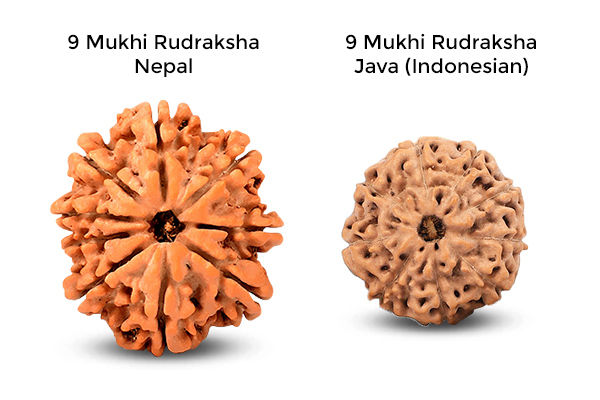
The 9 Mukhi Rudraksha is ruled by the divine Mother. Goddess Durga rules the rare nine Mukhi Rudraksha bead which hold the powers of all nine goddesses known as Nava Durga. The 9 Mukhi Rudraksha offers worldly comforts and fulfils desires known as Bhogha and offers liberation meaning Moksha to the wearer. Buy 9 Mukhi Rudraksha to receive the divine power of Shakti this Navratri.
Gomed Stone
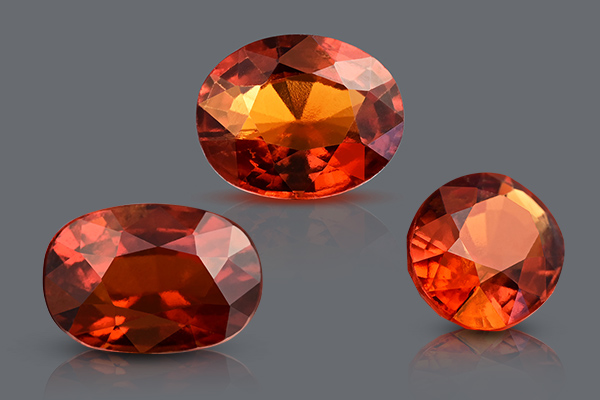
Buy Gomed Stone on the holy festival of Navratri
Hessonites have been prized as jewels for over 5000 years. Gomed stone or Hessonite is a gemstone known for its sparkling brown and reddish tones and use in beautiful jewelry. It is a powerful stone that bestows power, renown, political and social success, protection, and financial wealth. It is also well-known for destroying hidden foes and unseen negative energy in the environment.
Durga Puja

Powerful Goddess Durga Pujas conducted by our team of qualified Pandits complete with all Vedic rituals to revere Divine Mother Goddess and seek blessings of Protection, Power, Courage, Good Health, Prosperity, Wisdom, Spiritual Augmentation, relief from malefic effects of Planet Rahu, fulfillment of material and other desires. Book the Puja to receive blessings of Maa Durga in Navratri.
Durga Yantra
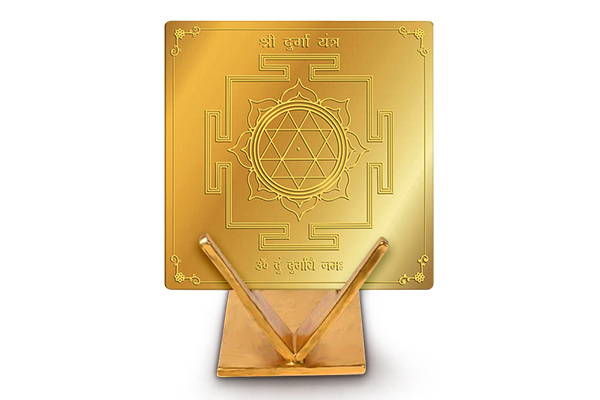
Durga Yantra bestows wealth and property and protects the person from all sorts of dangers. According to Adhayaya 4 Sloka 17 of Durga Saptashati (most powerful and potent collection of mantras dedicated to Goddess Durga created from Markandeya Puran), worshipping of this Yantra helps remove poverty. Receive strength and power, triumph over obstacles, and total supremacy over one's enemies during Navratri.
Durga Idols
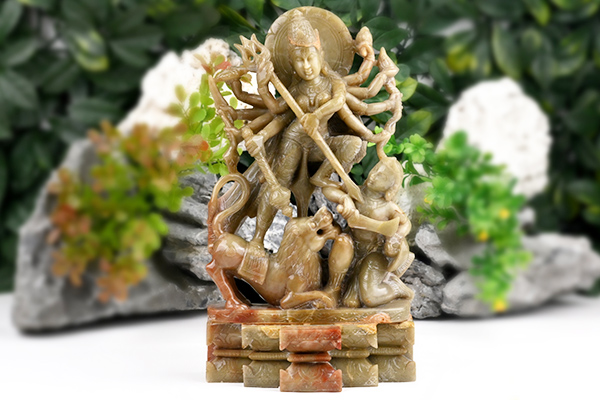
Goddess Durga represents power, victory, determination, energy and positive energies that destroys and protects from all negative energies. Keeping Durga idol/s at home or workplace during Navratri brings an abundance of divine power and blessings.
Kanya Pujan
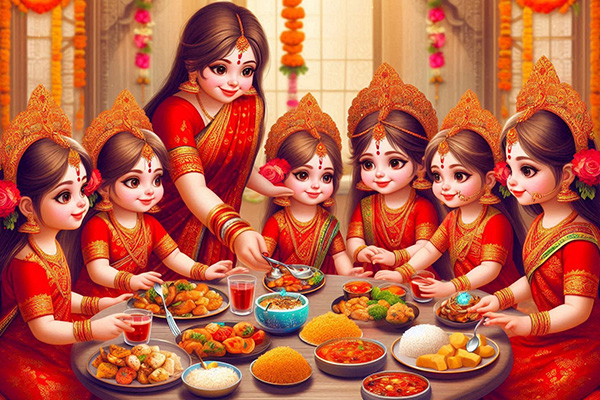
Kanya Pujan is observed on the eighth or ninth day of Navratri, known as 'Ashtami' or 'Navami,' and it involves the worship of young girls as forms of Goddess Durga. Book kanya Pujan on the auspicious day of Ashtami or Maha Navami of Navratri.
Conclusion
Navratri is a time of devotion, discipline, and divine connection, where the worship of Maa Durga and the Navadurga brings strength, wisdom, and harmony into life. Through rituals like Ghatasthapana, day-wise puja, fasting, mantra japa, and Kanya Pujan, devotees not only honor the Goddess but also purify their mind and soul. The festival culminates in Vijayadashami, symbolizing the eternal triumph of good over evil. Beyond rituals, Navratri inspires acts of seva, daan, and community celebration, reminding us of the deeper purpose of life, to live with courage, compassion, and faith. As the divine mother bestows her blessings during Shardiya Navratri, devotees are encouraged to carry forward the spirit of devotion into daily life. May Maa Durga’s grace fill every heart with energy and protection, guiding all toward righteousness and inner transformation.

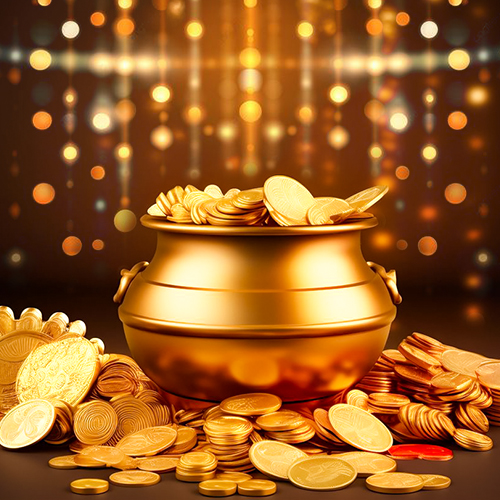
-in-Astrology.jpg)
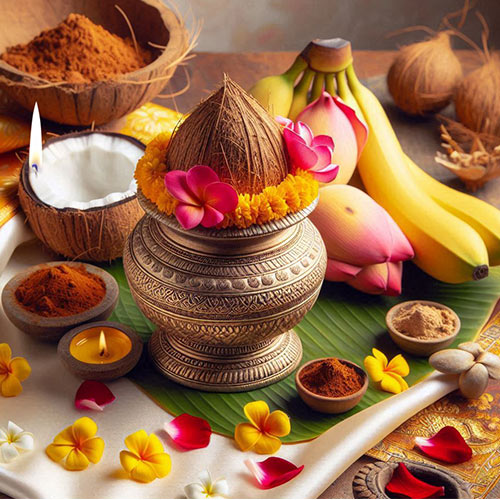
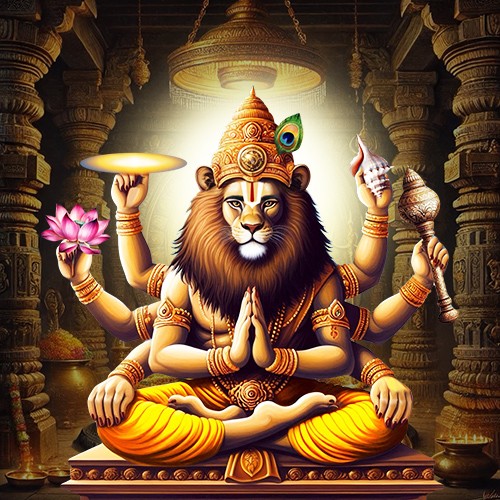
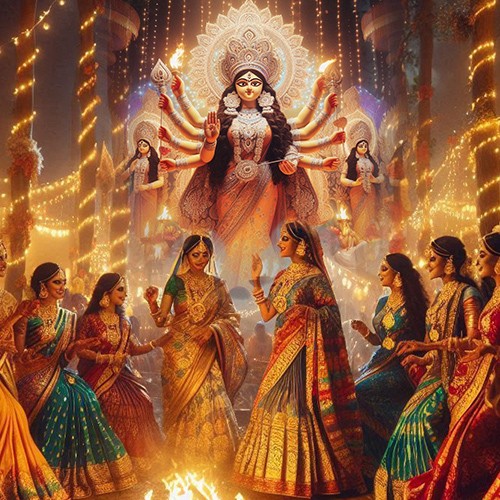
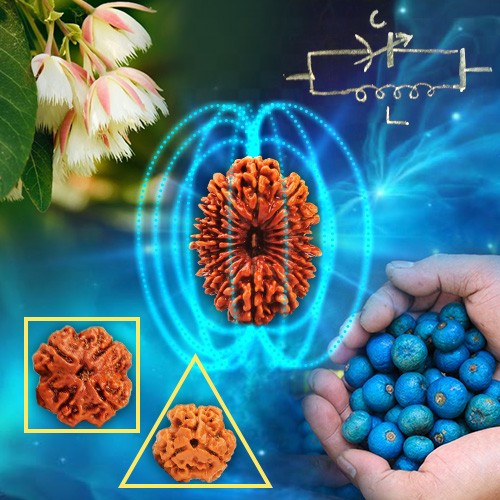


.jpg)
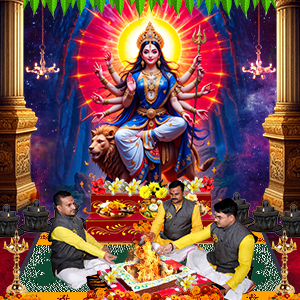

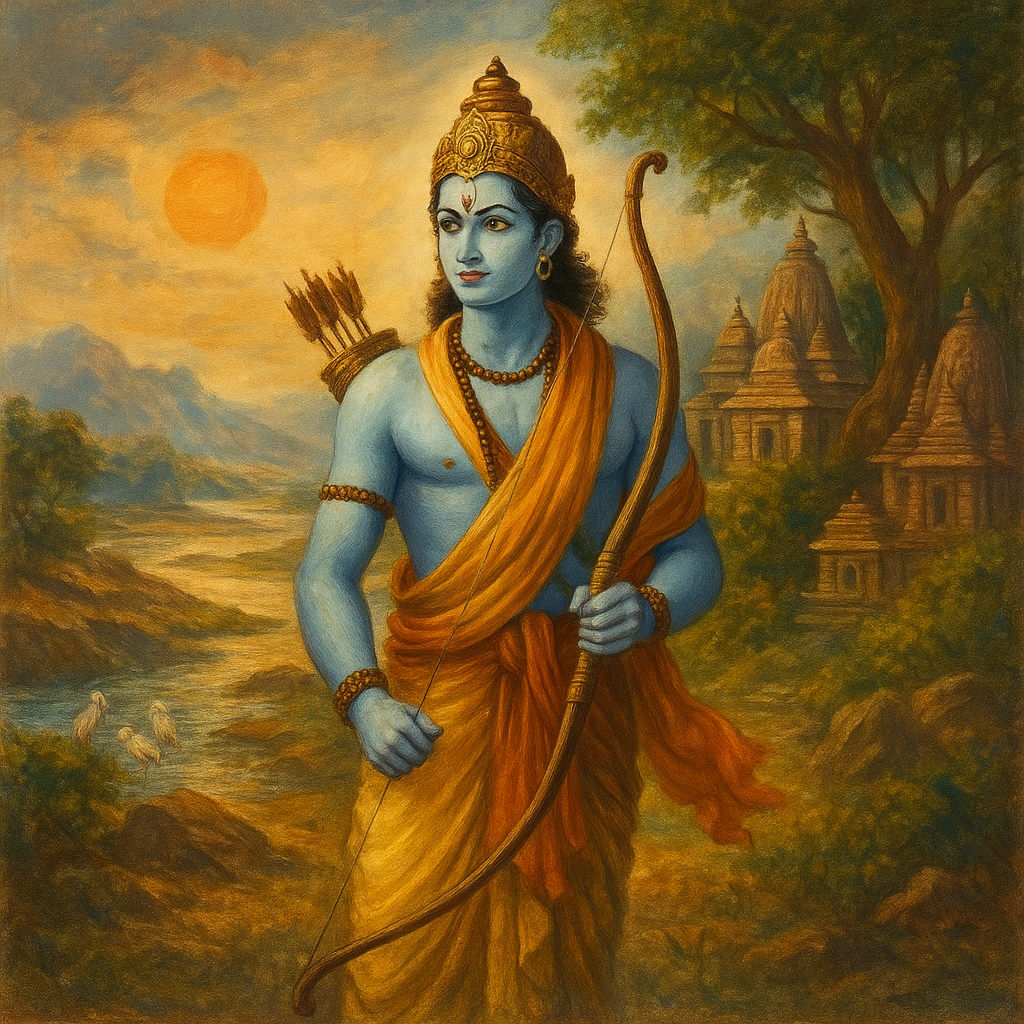
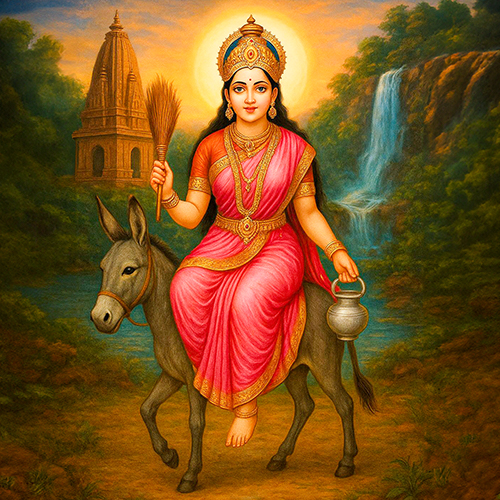
Comments 0
Leave your thought here